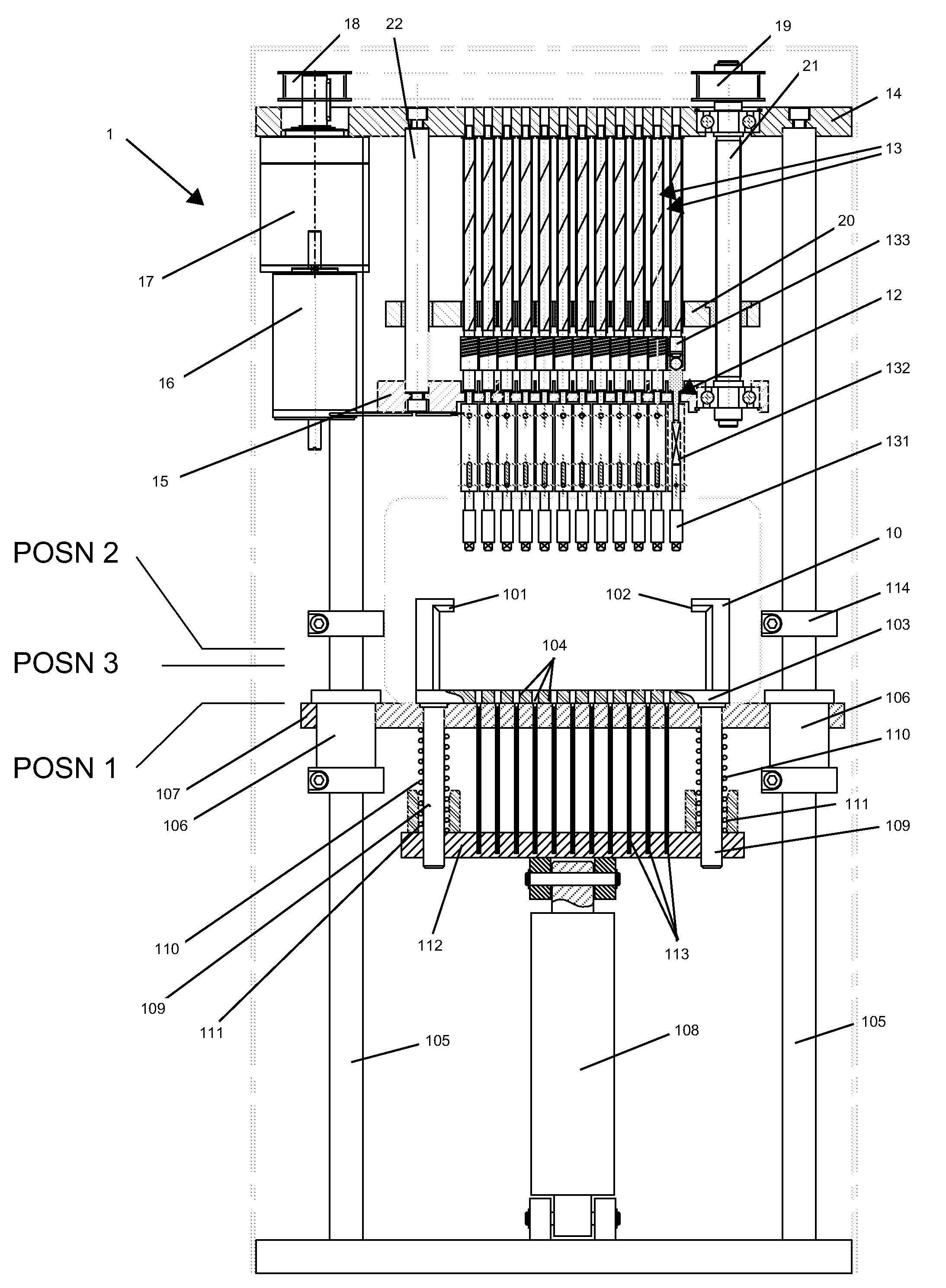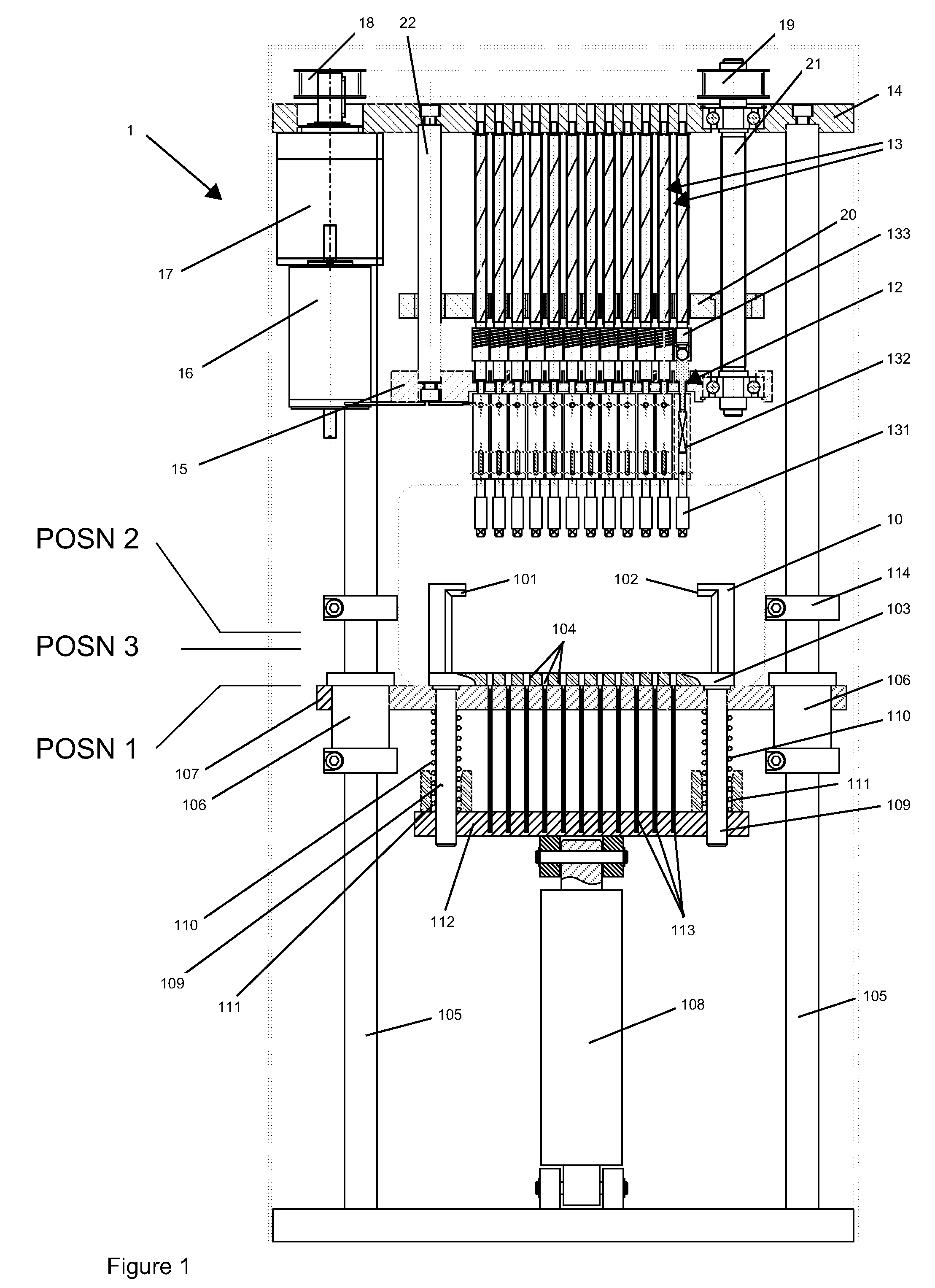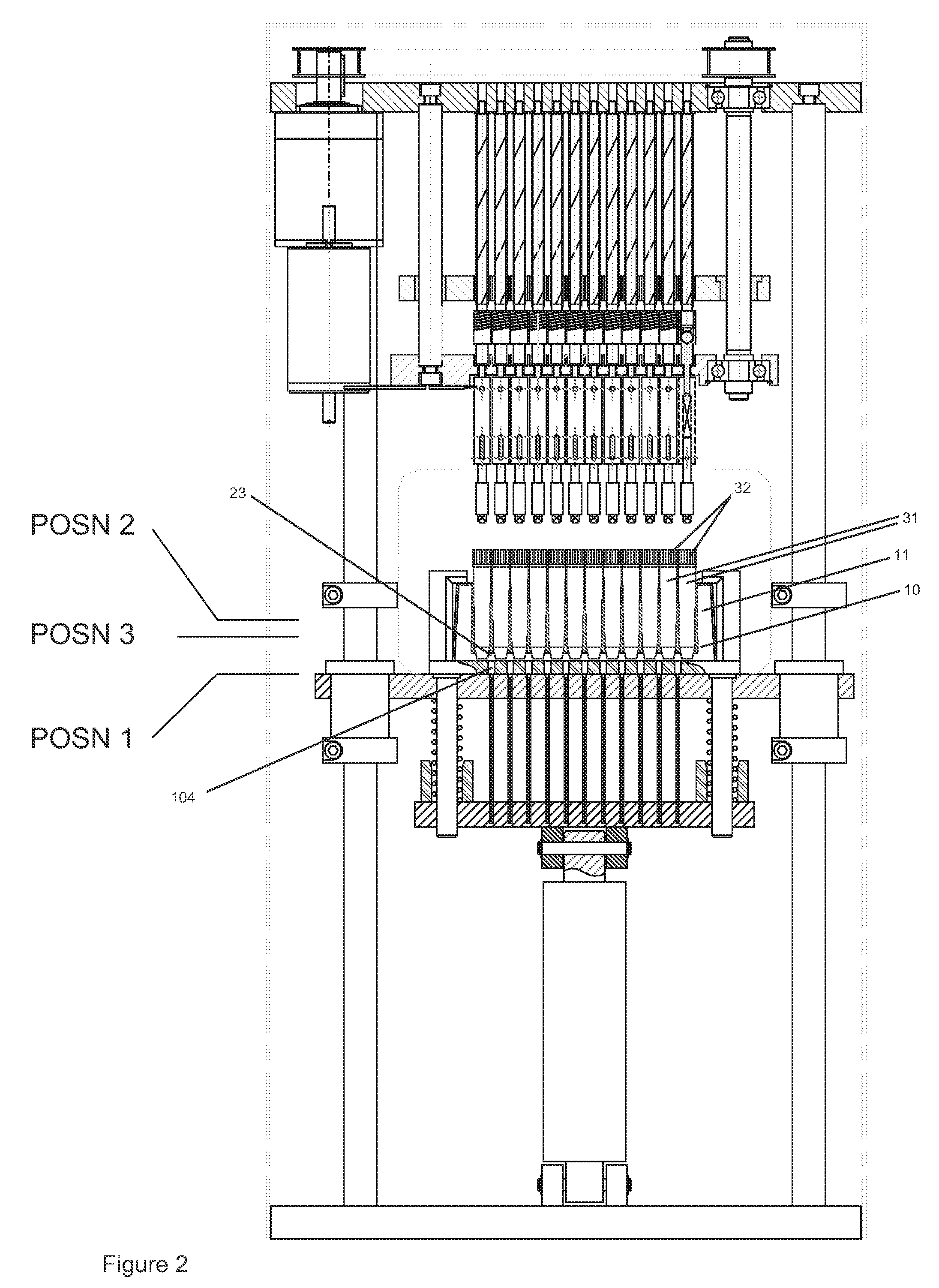Tube capper/decapper
a technology of capping and decapping tubes, which is applied in the direction of closure stoppers, open-closed containers, packaging goods, etc., can solve the problems of bulky systems, tediousness, slowness,
- Summary
- Abstract
- Description
- Claims
- Application Information
AI Technical Summary
Benefits of technology
Problems solved by technology
Method used
Image
Examples
Embodiment Construction
[0028]The capper / de-capper system 1 shown in the drawings comprises a standalone system for capping and uncapping screw-cap tubes and is designed as a bench-top system for use in either a laboratory or within a micro-biological control cabinet.
[0029]The system 1 includes a rack support 10 which is dimensioned, in this example, specifically to receive a standard 96-well SBS format rack 11 (see FIG. 2) in a defined and fixed horizontal position relative to a head unit 12.
[0030]The head unit 12 includes 96 capping / de-capping spindles 13 arranged in an 8 by 12 two-dimensional array.
[0031]FIG. 18 is series of views of one of the spindles 13 shown in more detail. It can be seen that the spindle 13 includes a capper / de-capper spigot 131 which is spring-loaded by a compression spring 132 and rotatably driven through a clutch 133. Each of the clutches 133 may comprise a spring wrap clutch as shown in FIG. 18, but various alternatives are possible and, for example, the clutch may comprise a p...
PUM
| Property | Measurement | Unit |
|---|---|---|
| Torque | aaaaa | aaaaa |
Abstract
Description
Claims
Application Information
 Login to View More
Login to View More - R&D
- Intellectual Property
- Life Sciences
- Materials
- Tech Scout
- Unparalleled Data Quality
- Higher Quality Content
- 60% Fewer Hallucinations
Browse by: Latest US Patents, China's latest patents, Technical Efficacy Thesaurus, Application Domain, Technology Topic, Popular Technical Reports.
© 2025 PatSnap. All rights reserved.Legal|Privacy policy|Modern Slavery Act Transparency Statement|Sitemap|About US| Contact US: help@patsnap.com



